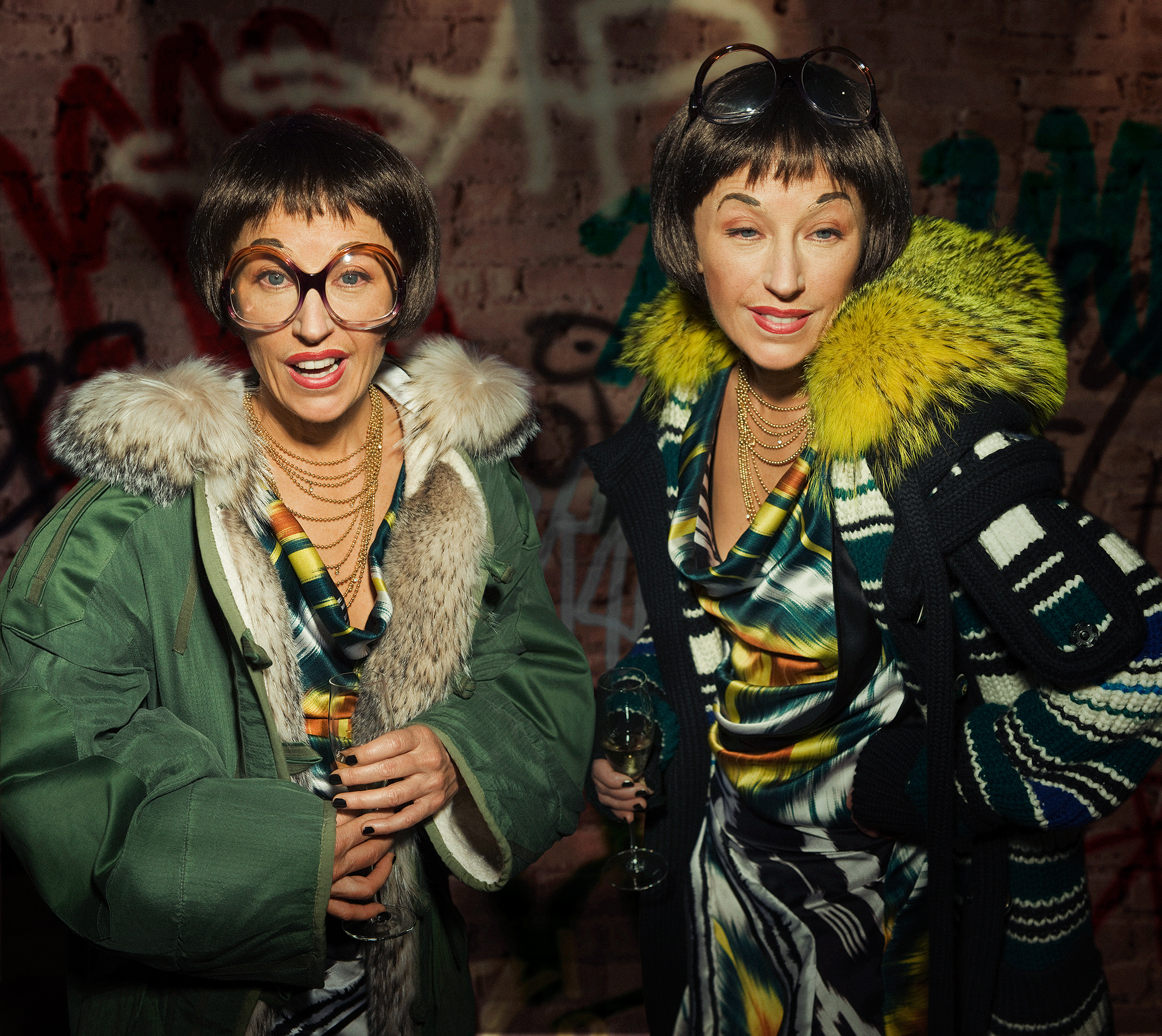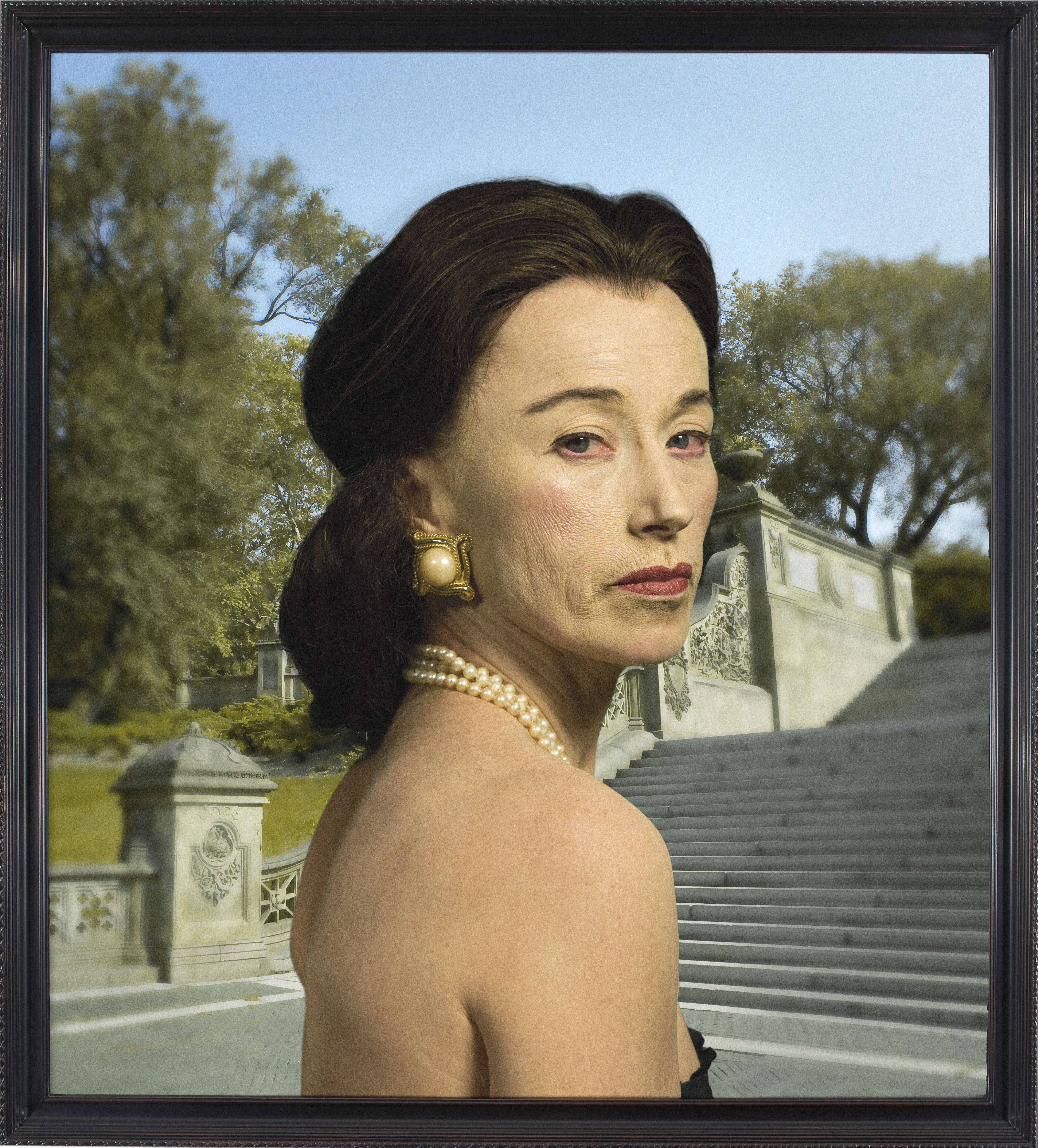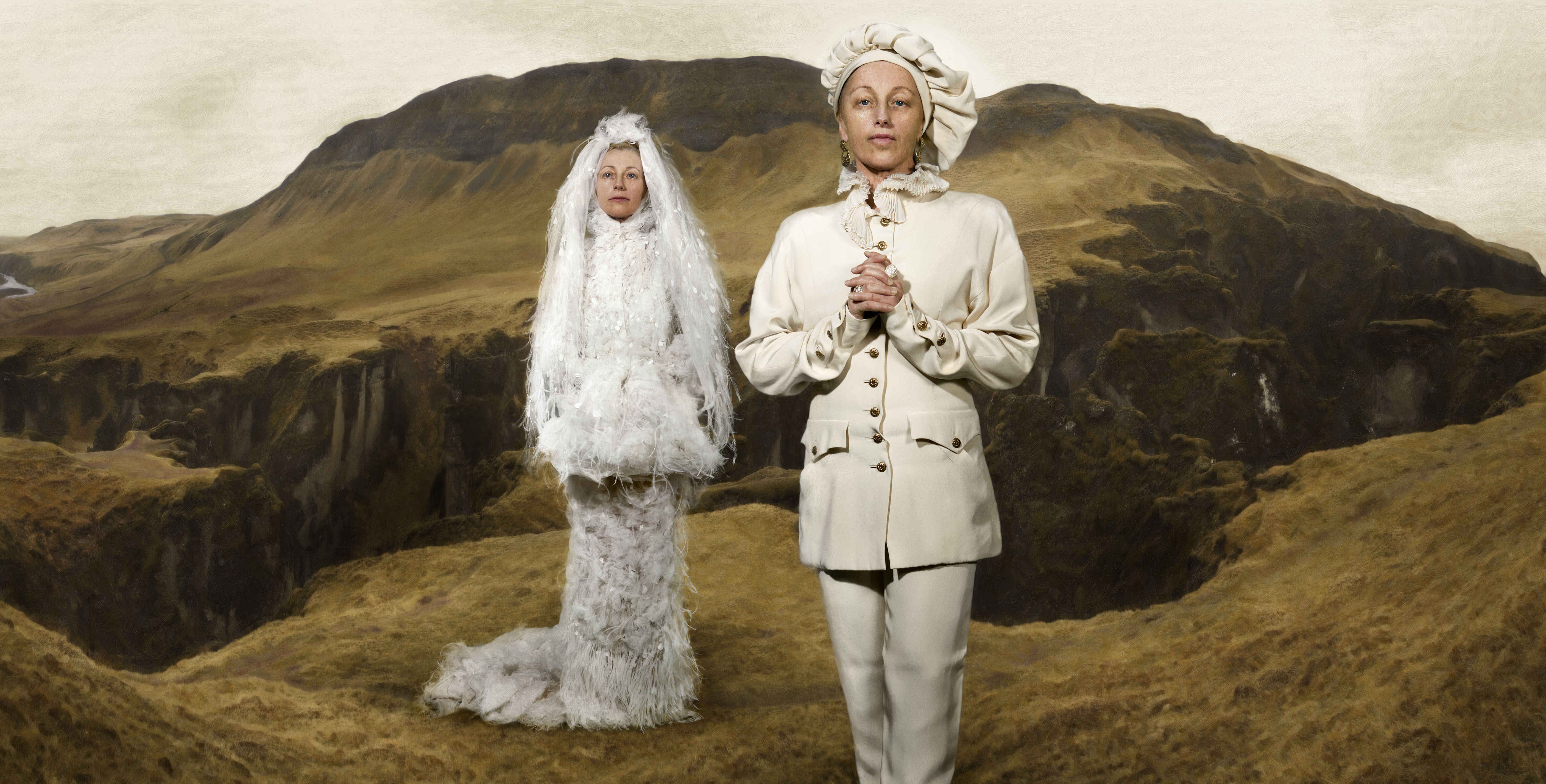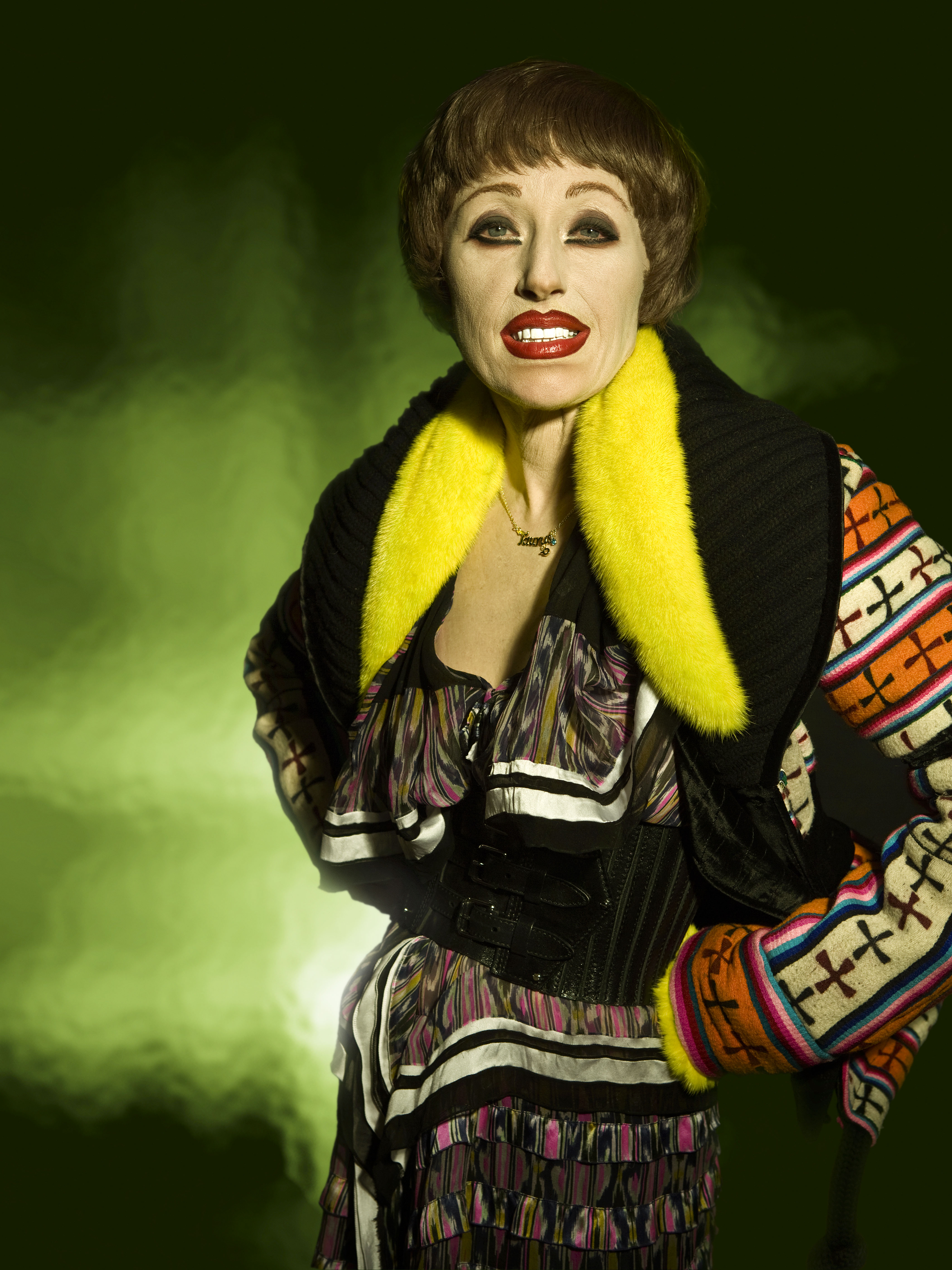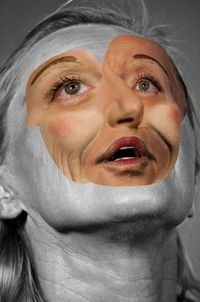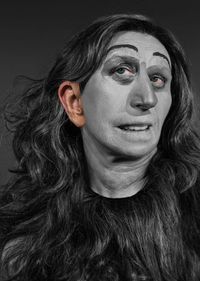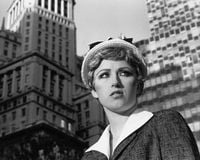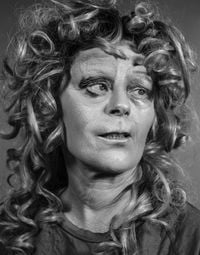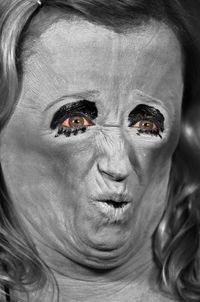Ellie Buttrose on Cindy Sherman
Ellie Buttrose. Courtesy QAGOMA. Photo: Mark Sherwood.

Ellie Buttrose. Courtesy QAGOMA. Photo: Mark Sherwood.
In 1977, Cindy Sherman began her most critically acclaimed body of work called 'Untitled Film Stills' (1977–1980). This series—in which Sherman photographs herself in different roles and settings, producing images reminiscent of Italian neorealism or American film noir—became famous for challenging the dominant gaze prescribed to women at the time.
It also signalled a particular period in the career of an artist who has become one of the biggest names in contemporary art. Nearly 40 years later, the Queensland Art Gallery and Gallery of Modern Art (QAGOMA) in Brisbane has opened a survey exhibition of another period in her career, spanning the past 16 years.
Cindy Sherman (28 May–3 October 2016) focuses on large-scale photographs made since 2000, charting Sherman's return as the central model in her artworks. Included are two series made in collaboration with the high fashion houses Chanel and Balenciaga, and new works shown for the first time outside New York, where the artist lives and works.
In the context of the exhibition, I spoke to the QAGOMA's Associate Curator of Contemporary International Art Ellie Buttrose about Sherman's lineage and how she has explored gender, privilege, class, and neo-liberalism throughout her work.
TMEllie, could you please tell us more about how Cindy Sherman's exhibition was conceived, what works were selected for this exhibition in Brisbane, and why?
EBGOMA's exhibition presents a survey of Cindy Sherman's practice since the year 2000. This date marks Sherman's return as the model in her work, after a period in the late 1980s and 1990s when the artist remained only behind the camera, using props and mannequins in the images. The exhibition begins with the 'headshots' series (2000–2), in which Sherman reappears as an older model.
As a whole, this exhibition addresses the contemporary representations of middle-aged and older women in visual media. The final room of the exhibition is filled with works that Sherman completed just before the exhibition opened. Inspired by Weimar and Hollywood films of the 1920s and 1930s, in these works the artist captures women in their later years, wistfully reflecting upon their dramatic lives.
The works are about aspiration and the failure to breach the gap of who we are and who we hope to be, something most people can empathise with regardless of their background.
TMWhat relationship do you draw between Sherman's work, capitalism and contemporary feminism in Australia today, and how do you think audiences will respond to her work?
EBHow we read status into fashion, make-up, and body language is key to Sherman's photographs. The artist's latest body of work references the films of the 1920s and 1930s that promoted the idea that the individual can rise through the previously fixed class system. The figure in Untitled #568 (2016), for example, is adorned in feathers and sequins and is ready to take on the world with her hand on hip, with the rising Manhattan skyline around her.
Untitled #462 captures middle-aged women beholden to fashion trends in their matching Balenciaga dresses, seeking out the paparazzi in the hope of being seen as stars, rather than just upper middle-class. Viewers have become acutely capable of reading the ways in which image culture presents aspirational values and reinforces cultural codes, and Sherman brings these interpretations to the fore.
TMYou have previously commented on Sherman's strength as an artist because she avoids a didactical approach in her practice; could you elaborate more on this idea?
EBThere is an ambivalence within Sherman's work that makes it hard to pin down her personal view of a social phenomenon. The works are akin to Rorschach inkblot tests in the way they are open to various readings. There are volumes written on Sherman's artwork, although much of this writing is descriptive.
These descriptions are filled with judgements on female beauty and class, and rather than revealing anything about the work itself, they tell us more about the writer. This becomes most obvious in the 'murals' series (2010) where background images are mirrored to create a perfect double. Printed like wallpaper and reaching five metres in height, they become oversized Rorschach prints within the space.
TMSherman's work can be seen as a critique of capitalism in America. How do you think her work resonates with women who are not directly represented through her work? I'm thinking of multicultural America; people of colour who have been as equally conditioned by America's neoliberalism, yet who are absent from Sherman's scope?
EBThe works are about aspiration and the failure to breach the gap of who we are and who we hope to be, something most people can empathise with regardless of their background. Sherman comes from an Anglo-middle class American background and her works speak from that very specific position.
Additionally, the works reference the dominant representations in the media that continue to be predominately white. Sherman does not speak on behalf of others but, as noted by Robert Leonard in the exhibition catalogue, the artist has paved the way for 'gay and queer Shermanettes, postcolonial Shermanettes and outsider-art Shermanettes'.
TMSherman has a certain command of the photographic image. Could you speak about how the exhibition engages with the changing medium of photography?
EBThe other reason that this exhibition covers works made since the turn of the century is because this marks Sherman's engagement with digital photographic processes. The exhibition tracks how these processes allow the artist to manipulate her features and also create more elaborate backgrounds. As visitors move through the exhibition, they see Sherman experiment with the relationship between the figure and the landscape.
The digital backgrounds begin with a simple post-production insertion of a Hollywood glow behind aspiring actors, and eventually transmute into more complex digitally enhanced gardens, rugged outcrops and cityscapes. As Miranda Wallace points out, the works become psychic portraits—rather than presenting themselves to a photographer, these figures float against the landscape as if they are 'apparitions or spectres'.
TMHow will the institution foster, facilitate and engage with conversations relating to themes present within Sherman's practice? Could you speak more about the discursive platform such as the film program accompanying the exhibition?
EBThe Head of Australian Cinémathèque, José Da Silva has curated an engaging film program that features characters 'that rebel against their social strictures and play with our expectations for the behaviour, desire and physicality of women onscreen'.
QAGOMA's Public Programs team have put together a range of talks and workshops involving artists and academics to accompany the project. GOMA Talks, hosted by ABC Radio National, will examine contemporary feminism, with special guest panellists including Alanah Pearce, Dr Emma A Jane, Jennifer Whelan and Van Badham.
Our after-hours Up Late series returns with an all-female line-up including Eleanor Friedberger, Mojo Juju, Kimya Dawson and Sampa the Great. Offering audiences another way to engage with ideas in the exhibition Sundays with Cindy features hands-on workshops, curatorial tours, talks by artists and a zine fair. —[O]






